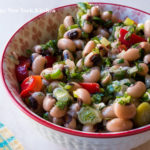Constitution Week – Foods of Our Forefathers Part VI
Drying was one of the major processes by which the colonists preserved the bulk of their winter’s stores. Fruits, especially apples, pears, peaches and apricots, some vegetables, and meat, particularly fish, were dried in large quantities for later use. Drying in the cloudy North was a tricky business, and was often combined with salting, especially for meat and fish. Even with salting, however, a rack of split, headless fish would have to be unloaded and stacked for overnight indoor storage to prevent the day’s drying from being “undone” by the evening damp. A string of cloudy, humid days was a threat to the whole process too, raising the possibility of loss by fermentation before drying had proceeded far enough to inhibit bacterial growth.
Drying had other problems too. Good air circulation on all sides was a must, and nets of hair were used to support the fruit or fish. The food being processed had to be turned frequently, several times a day during the early stages.
It also had to be protected from insects, bird droppings and blowing dirt, which was no mean task. Many early cookbooks carry explicit instructions to the housewife to examine her dried foodstuffs carefully, and to remove any portions, which were too heavily infested with insect eggs. A thorough cooking generally rendered the food safe, if not as esthetic as modern cooks might ask.
Since drying was such a time-consuming task, housewives often got together to do at least some of the work in company. Apple paring and coring parties were not unusual. After the apples were sliced, they were laid on screens or strung on strings to dry, after which they could be hung in the attic for use as needed. A bushel of apples yielded about 7 pounds of dried slices, which were especially welcome when rehydrated and made into “Schnitz Pie” or apple cobbler during the winter months.
If the housewife was especially concerned about appearance, she would sulfur her apples and other fruit as it dried. The trays of fruit slices would be stacked so as to allow air circulation, and the stack covered with a barrel or tight box, which was propped up off the floor about a half-inch. An ounce of “flowers of sulfur” was then twisted into a paper, set afire and stuck under the barrel for an hour’s exposure. The sulfur dioxide fumes acted both as a bleach and a preservation for the fruit.
Dried foods naturally lost a variety of nutrients during the process. The amount of nutrient loss varied with the skill of the housewife-processor, and with the weather and the sophistication of the equipment available to her. Fruits took longer to dry in the natural environment and hence lost some of their nutritive properties via spoilage and fermentation before the water concentration dropped to an appropriately low level. Conversely, if material were inserted in the brick oven after the day’s bread was baked, the temperature was sometimes excessive, and destructive to vitamins and delicate sugars.
Many housewives, however, learned the art very well, and produced dried fruits which would keep almost indefinitely, and which could be reconstituted months later to be used for stewed fruits, pies, and other dishes.
On interesting processed food invented by early Americans was hominy. As eaten, hominy was a winter substitute vegetable for sweet corn – although its vitamin C was completely destroyed, its vitamin A drastically reduced, and its protein content diminished. Still, it was available – provided the cook was willing to go through the long series of steps required in its preparation. First, a quart, say, of dry shelled field corn was boiled in a gallon of water containing an ounce of lye for about 30 minutes. This caustic solution was then drained off, the corn rinsed several times in fresh water, and then it was rubbed (under water) between the palms to remove the husks and black tips, which floated to the surface. The cleaned kernels were then covered with about an inch of fresh water and boiled for 5 minutes, drained, and covered again and boiled-flour times-and then boiled finally for some 45 minutes or until soft. It’s a small wonder the vitamins were lost!
To Be Continued…






